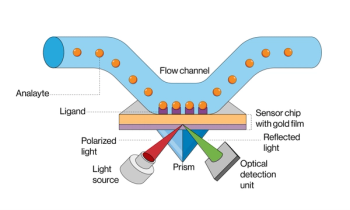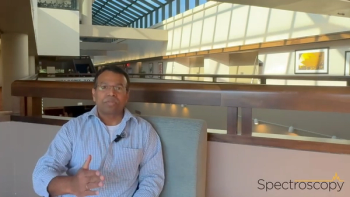
Best Practices for Optimizing ICP-MS Analytical Methodology: Impact of the Evolving Application Landscape
Key Takeaways
- ICP-MS has become a dominant technique for ultra-trace elemental analysis, with single quadrupole systems comprising 80% of the market.
- The cost of ICP-MS systems has decreased significantly, broadening accessibility and application diversity across industries.
Explore essential best practices for optimizing ICP-MS methodologies, enhancing accuracy, and tackling analytical challenges in diverse sample matrices.
I’m honored to be the editor of this special ICP-MS supplement for Spectroscopy magazine. It gives me the opportunity to focus on what I believe is largely being ignored in the open literature—educational material that can be easily understood and used by novices or someone who has limited experience in using the technique and wants to get the most out of their instrument. We see a multitude of applications that promote the high-performance capabilities of inductively coupled plasma–mass spectroscopy (ICP-MS) using triple quads and all the innovative bells and whistles that vendors like to sell, but there are very few publications that make life easier for the ICP-MS practitioner who just has a standard system and wants to optimize their analysis.
So, I have asked five companies I’ve collaborated with over the years to contribute articles to this special issue that focus on best practices for optimizing ICP-MS analytical methodology and, in particular, developing instrument components and accessories to deal with difficult sample matrices. Some of the topics covered include improving microwave digestion, maximizing sample delivery, improving detection capability, reducing contamination, minimizing interferences, and extending cone lifetime. In addition, I have also taken the opportunity to look at the application landscape since the technique was first commercialized in 1983 to get a better understanding of how ICP-MS practitioners have adapted these best practices to meet the diverse and varied demands of their sample workload.
Over 40 Years Old
The commercial ICP-MS marketplace has just celebrated its 40th anniversary. At the 1983 Pittsburgh Conference in Atlantic City, New Jersey, Sciex introduced the Elan 250 quadrupole-based ICP mass spectrometer. It was another 12 months before its joint venture with PerkinElmer was announced, but the event was the beginning of the meteoric rise of ICP-MS as the dominant multielement technique used for ultra-trace elemental analysis. Many vendors and instruments designs have come and gone over that time, but single quadrupole technology still dominates the instrumental landscape with approximately 80% of the marketplace.
Today, there are approximately 2000 ICP-MS installations worldwide every year, comprising of single quadrupole systems, triple/multi quads, time of flight (TOF) and magnetic sector instruments performing a wide variety of applications, including routine, high-throughput multielement analysis, isotopic fingerprinting, single particle and cell studies, and elemental speciation coupled with high performance liquid chromatography (HPLC), to name a few (1). As more and more laboratories invest in the technique, the list of applications is getting significantly larger and more diverse. The most common ones include environmental monitoring, geochemical, metallurgical, petrochemical, petroleum, food, agricultural, clinical, toxicology, semiconductor, industrial, rare earth, energy, nuclear, pharmaceutical, and cannabis, but every year it seems that a new market has woken up and realized the potential of its capabilities.
Market Segments
As a result of the widespread use and acceptability of ICP-MS, the cost of commercial instrumentation has dramatically fallen over the past 25 years. When the technique was first introduced, $250,000 was a fairly typical amount to spend for a single quadrupole-based system, whereas today one can purchase one for under $150,000. Although it can cost a great deal more to invest in a “triple quadrupole” collision or reaction cell instrument, most laboratories that are looking to invest in the technique should be able to justify the purchase of an instrument without price being a major concern. One of the benefits of this kind of price erosion is that, slowly but surely, the atomic absorption (AA) and ICP-optical emission spectroscopy (OES) user community are being attracted to ICP-MS, and as a result, the technique is being used for more and more diverse application areas. Figure 1 shows a percentage breakdown of the major market segments being addressed by ICP-MS on a worldwide basis today.
Three points should be emphasized here. First, the data can be significantly different on a geographical or regional basis, because of factors such as a country’s commitment (or lack of it) to environmental concerns or the size of a region’s electronics or nuclear industry, for example. Second, many laboratories carry out more than one type of application, and as a result can be represented in more than one market segment. Finally, the research market segment has been listed as a separate category to show the instruments that are being used in an academic environment or for non-routine applications. However, many universities, federal organizations, or corporate R&D groups might be using their instrumentation for research purposes in a particular application segment. For these reasons, these data should only be considered an approximation for comparison purposes.
Performance Capability
Without question, extremely low detection capability, combined with increased sample throughput, have been the main incentives for analytical chemists to invest in ICP-MS. The technique is now considered a mature tool that is being used for the routine, high-throughput analysis of complex samples with very little or no sample preparation. In the early days, it was used by academic institutions and large corporate R&D laboratories. Nowadays, ICP-MS instrumentation is also being used by contract laboratories in the routine analysis of environmental, pharmaceutical and biomonitoring applications, among others. This has been made possible by greater automation on the sample preparation side and seamless method development tools, which have resulted in far less operator expertise required to run them. It is also worth pointing out that stricter regulations are requiring lower and lower detection limits (DLs), particularly in the semiconductor, biomonitoring, food and beverage market segments. In addition, for the past five years, the rapid growth in the legal cannabis industry has meant cultivators and processors have to ensure the safety of consumer products by meeting strict state-based limits for contaminants like heavy metals. So, the drive toward lower detection limits is just one factor, whereas the other is the analytical needs and demands of the customer. For example, the electronics industry is faced with the enormous challenge of “chasing zero,” so manufacturers must measure the lowest level of elemental impurities in process chemicals and electronic devices to ensure the highest performance of their products.
Analytical Challenges
As ICP-MS has become widely applicable in a variety of application areas, it has become more readily accessible to startup laboratories. Part of this is the development of turnkey methods for food, environmental, biomonitoring, geochemical, pharmaceutical, and cannabis applications for inexperienced and novice users, which will be critical for the growth of this technique in these market segments.
Important considerations include ease of use, seamless software, low maintenance, and the ability to handle different matrices, which give the analyst confidence in the results being generated and ensure they get the correct answer the first time and every time. The user community expects these qualities, particularly in high-throughput laboratories. They want to run the instrument for extended periods with minimum maintenance and short downtime while simultaneously running multiple samples, many containing high concentrations of mineral acids. It is important to emphasize that this kind of sampling environment is not really instrument friendly. When samples are being run that contain high concentrations of mineral acids and dissolved solids, it will take its toll on the instrument’s sample introduction components. Therefore, the instrument must be rugged enough to handle this kind of sample matrix, without contributing significantly to the routine maintenance of the system, while at the same time delivering high-quality data, day in and day out.
Therefore, ruggedness is critically important when designing an ICP-MS instrument. However, this is just one side of the analytical challenge. As mentioned previously, the semiconductor industry is the one application area where this kind of ruggedness is expected, but the lowest possible detection limits are also required. Just 15 years ago, 10 ppt was the guideline for elemental impurities in semiconductor process chemicals; today, the industry is requiring 1-2 ppt. This puts unique demands on the design of any instrument used for this kind of analysis.
Consequently, with the push for lower and lower detection capabilities, it is becoming a major challenge not only to develop instrumentation that has high analyte sensitivity and extremely low background noise, but also to have an ultra-clean lab and sample preparation environment that sets the stage for the detection of elements at such low levels. Both factors are absolutely critical. The trend towards ease of use has meant that operators have less time to be involved with the analytical procedure and therefore are often not versed in the nuances of working in the ultra-trace environment and won’t necessarily recognize issues which require user intervention, should they arise. For that reason, instruments have to be rugged, and robust in the face of difficult and complex sample matrices but using preventative maintenance procedures should be able to diagnose and mitigate potential problems before they actually happen.
Best Practices
So, with this as background information, here are a series of articles covering “best practices” from five different companies who specialize in the fields of sample preparation, sample introduction and sample delivery to help ICP-MS practitioners better deal with their diverse and varied sample matrices and workloads.
Unlocking ICP-MS Accuracy & Productivity with Microwave Digestion
Michael Coppola and Guilio Colnaghi, Milestone Inc.
Achieving high accuracy and productivity in ICP-MS analyses begins with optimized sample preparation. Microwave digestion provides significant advantages for laboratories analyzing diverse matrices, enabling precise elemental recovery, lower detection limits, faster throughput, and reduced contamination risk. This article discusses pre-analytical best practices, recent innovations, and other productivity tools to consider throughout the workflow, explaining how these factors collectively enhance analytical accuracy and data integrity. Real-world case studies will highlight how laboratories can implement these strategies to strengthen their ICP-MS methods and overcome common sample prep challenges.
The Role of the Nebulizer in ICP-MS: Design Considerations, Selection Criteria, and Optimization Guidelines
Justin Masone, Glass Expansion
This article examines best practices for optimizing nebulizer selection and performance in ICP-MS. It provides an educational overview of nebulizer design evolution, highlighting the benefits of various designs and their impact on aerosol characteristics, such as droplet size and distribution. Aerosol diagnostic data will be incorporated to demonstrate how both nebulizer design and operating conditions influence these characteristics, and how this relates to sensitivity, precision, and overall analytical performance. Finally, we explore modern aerosol dilution and aerosol filtration techniques, demonstrating their role in enhancing nebulizer aerosol quality to maximize instrument performance.
Enhancing ICP-MS Efficiency with an Innovative, Low-Maintenance Nebulizer
Sergei Leikin, Texas Scientific; Mary Kay Amistadi, University of Arizona Laboratory for Emerging Contaminants
Robust ICP-MS analysis of complex matrices—especially those containing even small particulates and high salt levels—remains a significant challenge due to frequent clogging of conventional concentric nebulizers. Commonly recommended filtration or centrifugation steps are labor-intensive, increase costs and extend turnaround time. To overcome these limitations, an innovative nebulizer featuring a robust non-concentric design with a relatively large sample channel internal diameter was employed. This design provides good resistance to clogging and improved tolerance to tough matrices. Results from over two years of continuous operation across a wide range of challenging sample types showed a substantial increase in ICP-MS throughput. Overall analytical efficiency was significantly enhanced through a combination of factors: elimination of nebulizer blockages, removal of time-consuming filtration or centrifugation steps, and a substantial reduction in nebulizer maintenance.
Behind the Signal Drop: Distinguishing Between Cone and Sample Introduction Issues in ICP-MS
Liz Ranalli and Genette Alcaraz, Spectron Inc.; Sergei Leikin, Texas Scientific
Reduction in signal intensity or analytical precision is the most common performance issues ICP-MS users are faced with. Troubleshooting these problems can be costly since distinguishing between cone degradation and issues related to the sample introduction system is often challenging—even for experienced analysts. A rational, step-by-step approach to diagnosing and resolving the common ICP-MS performance issues is proposed. It includes practical guidance on inspection criteria and maintenance protocols to determine when to clean, refurbish, or replace interface cones. The proposed approach is intended to reduce instrument downtime and operational costs by extending the cone lifetime and minimizing unnecessary replacement.
Silent Saboteurs: Hidden Contaminants, Impurities, and Artifacts in Trace Element Analysis
Patti Atkins, Antylia Scientific
Accurate and reproducible elemental quantification by ICP-MS demands rigorous control of all sources of contamination and matrix interference. Trace-level analytes are particularly susceptible to false positives, signal suppression, and spectral overlap originating from suboptimal reagents, environmental background, and instrumental components. This article provides a comprehensive examination of contamination and interference pathways that compromise ICP-MS data quality. Specific focus is given to elemental impurities in high-purity acids and water, contributions from sample preparation vessels and labware, and the chemical and physical behaviors of polyatomic and isobaric interferences. We further address the underappreciated risks posed by residual organics and microbiological contamination in reagents and diluents, which can alter plasma behavior or introduce matrix effects. Practical mitigation strategies—including best practices in reagent selection, lab hygiene, and reference material validation—are discussed to support high-accuracy measurements in regulated and ultra-trace analytical environments.
About the Author
Newsletter
Get essential updates on the latest spectroscopy technologies, regulatory standards, and best practices—subscribe today to Spectroscopy.





